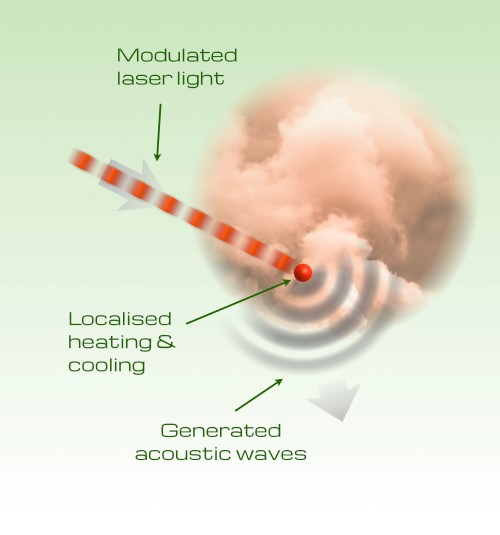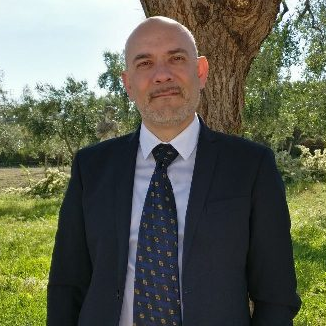New Prospects in Photothermal and Photoacoustic Techniques for Sensing and Imaging Applications
A special issue of Sensors (ISSN 1424-8220). This special issue belongs to the section "Optical Sensors".
Deadline for manuscript submissions: closed (31 March 2023) | Viewed by 15556
Special Issue Editors
Interests: optoacoustic gas sensing; quantum cascade lasers; spectroscopic techniques for real-time device monitoring; thermal modeling of optoelectronic devices
Special Issues, Collections and Topics in MDPI journals
Interests: photoacoustic & photothermal nondestructive evaluation and testing of materials; photothermal deflection; photothermal radiometry
Interests: optoelectronics and nanotechnology; innovative optical gas sensor systems based on quartz-enhanced photoacoustic spectroscopy (QEPAS); light-induced thermoelastic spectroscopy (LITES) and tunable diode laser absorption spectroscopy (TDLAS) and their application to environmental monitoring, industrial process analysis, control, medical diagnostics
Special Issues, Collections and Topics in MDPI journals
Special Issue Information
Dear Colleagues,

The purpose of this Special Issue is to report on key recent advances in photoacoustic & photothermal (PA/PT) techniques as applied in the fields of nanoscale biomedicine, nondestructive evaluation and testing of materials, sensing, spectroscopy, and thermophysical phenomena, along with technologies that have been the main theme of the biennial series of courses on Progress in Photoacoustic & Photothermal Phenomena organized at EMFCSC since 2010. This sixth workshop will bring together natural and biomedical scientists, engineers, technology developers, and users who are interested and/or involved in the principles and applications of PA/PT. The wealth of present-day PA/PT topics indicates that this field has developed a broad range of tools for fundamental and applied research. PA/PT research has reached a mature state, firmly established as a non-destructive measurement and a material characterization technology on the macro- and nanoscale, as well as a non-invasive biomedical imaging technique. Future progress will be seamlessly linked to close synergy with advances in new laser and detector technologies. This Special Issue emphasizes the explosive growth in biomedical PA, emerging bio-photothermal imaging modalities, and their applications. It also emphasizes the significant and growing contributions of PA/PT to non-destructive material evaluation/characterization at the nanoscale and gas sensing application for industrial, environmental, and biomedical applications. This Special Issue is fully supported by the Progress in Photoacoustic & Photothermal Phenomena school and workshop panel of directors.
Prof. Dr. Vincenzo Luigi Spagnolo
Prof. Dr. Roberto Li Voti
Dr. Angelo Sampaolo
Dr. Giansergio Menduni
Guest Editors
Manuscript Submission Information
Manuscripts should be submitted online at www.mdpi.com by registering and logging in to this website. Once you are registered, click here to go to the submission form. Manuscripts can be submitted until the deadline. All submissions that pass pre-check are peer-reviewed. Accepted papers will be published continuously in the journal (as soon as accepted) and will be listed together on the special issue website. Research articles, review articles as well as short communications are invited. For planned papers, a title and short abstract (about 100 words) can be sent to the Editorial Office for announcement on this website.
Submitted manuscripts should not have been published previously, nor be under consideration for publication elsewhere (except conference proceedings papers). All manuscripts are thoroughly refereed through a single-blind peer-review process. A guide for authors and other relevant information for submission of manuscripts is available on the Instructions for Authors page. Sensors is an international peer-reviewed open access semimonthly journal published by MDPI.
Please visit the Instructions for Authors page before submitting a manuscript. The Article Processing Charge (APC) for publication in this open access journal is 2600 CHF (Swiss Francs). Submitted papers should be well formatted and use good English. Authors may use MDPI's English editing service prior to publication or during author revisions.
Keywords
- Thermal Lens Spectroscopy
- Photothermal Beam Deflection Spectroscopy
- Photoacoustic Phenomena
- Infrared Radiometry
- Non-Destructive Evaluation and Testing
- Biomedical and Biological PA/PT Application
- Photothermal Interferometry
- Photoacoustic Spectroscopy and Sensing for Environmental and Biomedical Applications









